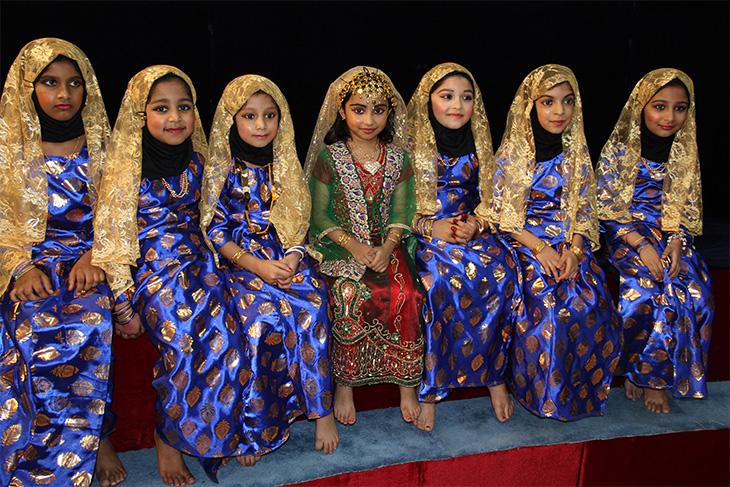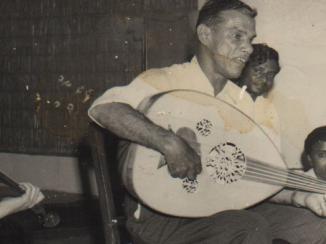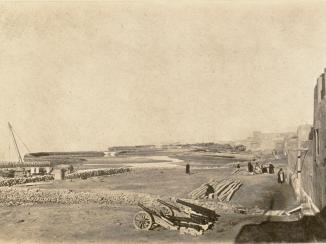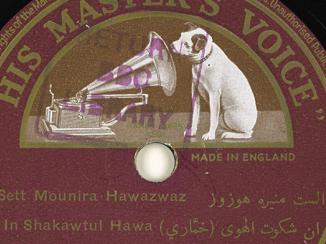Overview
Kuwait as a country is difficult to access for outsiders as it is a family-based society, but once a person is introduced it is easier to access.
– Mirwas (drum) player, Abdullah Al-Jaddah, May 2014
Upon first arriving in Kuwait City, I found it difficult to imagine a traditional musical culture thriving in the thoroughly modern city. But as Al-Jaddah explained to me, once personally introduced to the numerous places where traditional music is still practised, the rich heritage of a living musical culture became apparent.
From 10 May to 2 June 2014, I conducted research on traditional music and oral history in Kuwait. There, I had the opportunity to record traditional music and dance at private musical events and specially arranged recording sessions.

The main aim of my research and fieldwork was to complement the historical, commercial recordings (mainly shellac discs) and older fieldwork recordings from Kuwait in the British Library’s collections.
Although I was aware of the extremely rich and diverse traditional musical cultures in Kuwait, my research could only feature some sample genres due to time constraints. The new audio and video recordings I produced during my time in Kuwait therefore constitute a small window into some of the various traditional and emerging musical cultures in Kuwait.

Musical and Dance Genres
After my time in Kuwait, it became clear to me that the country was, and in many ways still is, the centre of traditional music in the Persian Gulf The historical term used to describe the body of water between the Arabian Peninsula and Iran. . Together with Bahrain, Kuwait shares the honour of being the birthplace of various popular musical genres such as ṣawt.
In particular, bahri (sea music) has been at the heart of Kuwait’s music scene. Numerous old audio and video recordings show scenes and sounds from the country’s ‘roaring 1960s’, when male and female performers played widely and were recorded by record labels and television companies. Kuwait has maintained this thriving traditional music culture until today, which is practised almost exclusively in private homes and semi-private diwānīyahs. These traditional reception areas, where Kuwaiti men receive guests, are often also used as venues for making music.

Apart from the Gulf-Arabic musical genres sowt, samra (a Bedouin genre featuring two groups of singers), leywa (an African-influenced ritual dance music), bahri and khadri (a devotional genre), we also recorded the Maplah musical genres of opana, kolkali, daffu muttu and maplah pattu. These genres originate from the Keralan community in Kuwait.
The highlight of the research trip in Kuwait was my introduction to Bin Hasseyn, one of the oldest musical diwānīyahs. There, I was introduced to a large group of traditional Kuwaiti musicians and recorded an exhilarating Thursday night party, where the artists played, sang and danced sea music, such as ṣawt, leywa and other Kuwaiti musical genres.

Yusuf Al-Jaddah, a sowt singer I encountered during a performance in a private suite at the Jumeirah five-star hotel in Kuwait City in May 2014, pointed out the huge changes that have occurred in the background, even as the tradition of communal performance has persisted:
Years back I used to sing exactly at this spot with musicians from Bahrain. We were sitting in the sand and this hotel was not even built.
Kuwait was musically quite a revelation to me. Despite rapid modernizations across the Gulf, which sees traditional performances occurring nowadays in hotels as well as diwānīyahs, traditional music is still performed, at least in private gatherings, on a weekly basis. Although at first the apparent absence of any older buildings in the city centre would imply complete modernisation of the culture, it is clear that musical culture is still very vibrant.









